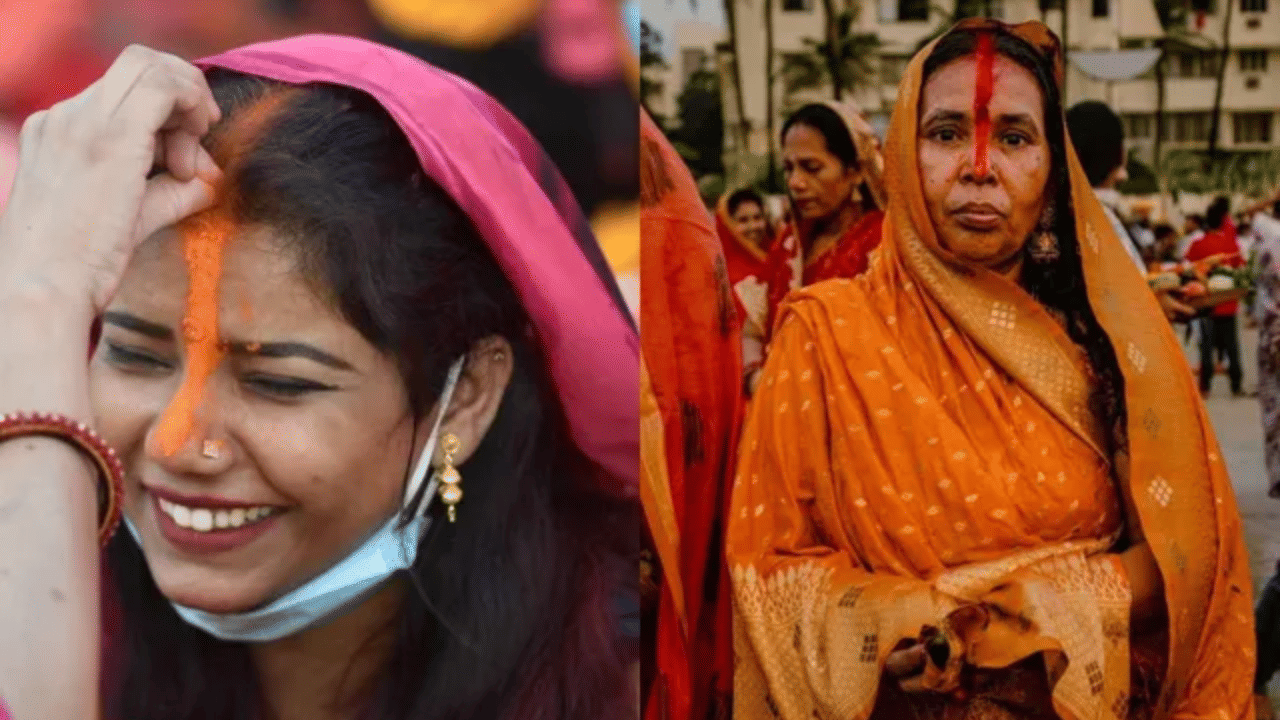New Delhi: Chhath Puja 2025 has begun, and across North India, women are seen applying orange sindoor from the nose to the forehead. This vibrant ritual is more than just tradition—it’s a symbol of devotion, purity, and feminine energy. As millions celebrate Chhath Puja, the sight of women adorned with sindoor is everywhere, from homes to ghats. But why orange? And why this specific application? Let’s uncover the spiritual and scientific reasons behind this unique custom.
This year, Chhath Puja started on October 25, 2025, and the sindoor ritual is trending on social media. From Instagram reels to festive blogs, everyone’s curious about the meaning behind this practice. Whether you’re a devotee or just love festive traditions, understanding the significance adds depth to your celebrations. Let’s dive into the reasons that make this ritual so special.

Spiritual significance of orange sindoor in Chhath Puja 2025
The orange sindoor symbolises the radiant energy of Surya and the blessings of the sun. Drawing the line from the nose to the forehead is believed to anchor devotion, fertility, and marital harmony, acting as a sacred reminder of fasting and prayers during the puja. The colour orange is associated with vitality, warmth, and solar power, aligning with Chhath’s central themes of gratitude and abundance. For many, this mark also serves as a visible expression of protection against negative energies and a beacon of blessing for the household.
Scientific perspective of long sindoor application during Chhath Puja 2025
Beyond symbolism, there are practical aspects often noted by observers. Traditional sindoor formulations may include natural minerals and turmeric derivatives, which can offer mild antiseptic and antioxidant properties that support skin health. The forehead-nose area corresponds to a concentrated point in traditional chakra systems; applying sindoor there is thought to promote mindfulness and focus during long vigil hours. Visually, the orange hue resonates with warmth and energy, potentially uplifting mood during stringent fasts and late-evening rituals.
Yogic symbolism of women applying orange sindoor during Chhath Puja 2025

The forehead area is frequently linked to the ajna chakra, or the “third eye,” in many traditions. This focus point is believed to aid concentration, intuition, and inner clarity—qualities beneficial for sustaining meditative focus during the day-long observances of Chhath Puja. While modern science doesn’t prove chakra theories, the ritual’s emphasis on mindful breathing, ritual cadence, and communal singing can positively impact mental well-being and resilience during the festival.
Orange sindoor during Chhath Puja 2025 embodies a harmonious blend of faith, culture, and well-being. It stands as a vibrant reminder of devotion to Surya, while offering subtle, practical benefits for skin health and mindfulness. If you’re part of the celebrations, embrace both the spiritual reverence and the gentle science behind this emotive tradition.
